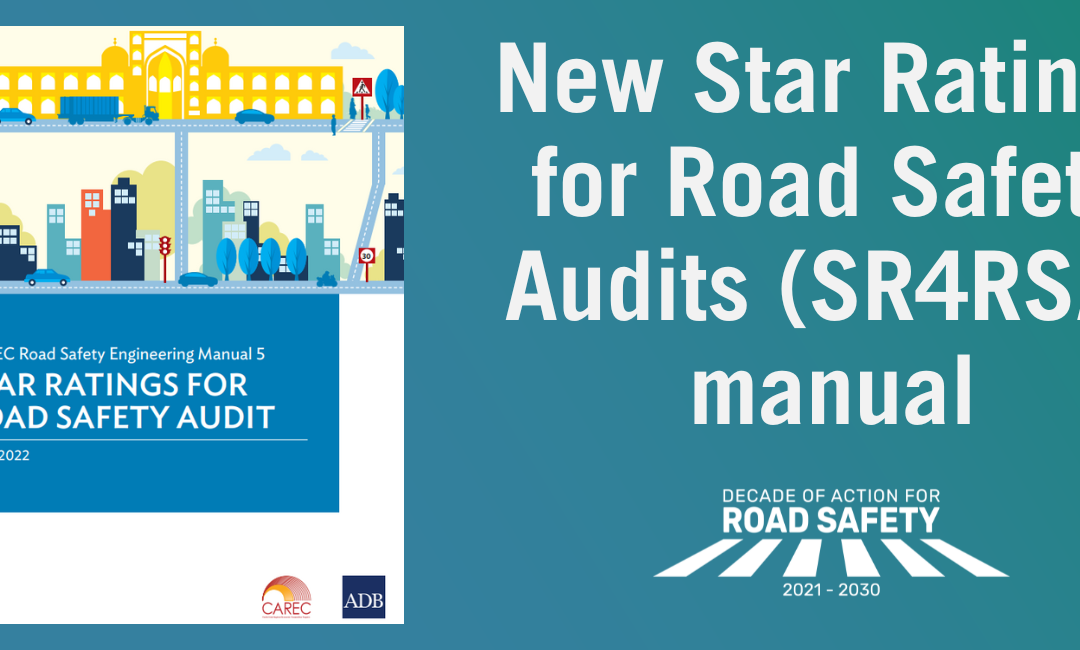To help ensure road designers can achieve Global Road Safety Performance Targets and ensure that roads are safe for everyone, a new Star Ratings for Road Safety Audits (SR4RSA) manual will help policy makers and practitioners involved in designing, upgrading, and rehabilitating roads to meet safety targets and reduce injuries from traffic crashes.
The manual supports the implementation of the Global Plan for the Decade of Action for Road Safety 2021-2030 which recommends the use of Road Safety Audits (RSA) and the iRAP methodology. The Global Plan recommends that national and local governments “Undertake road safety audits on all sections of new roads (prefeasibility through to detailed design) and complete assessments using independent and accredited experts to ensure a minimum standard of three stars or better for all road users.”
The manual is part of a series of road safety engineering manuals of the CAREC Program that came from the endorsement of the CAREC Road Safety Strategy 2017-2030 by member countries. The strategy supports and encourages CAREC authorities to plan, design, construct, and maintain safe roads.
The manual presents three approaches for how the RSA and iRAP methodology can be applied together during the design phases of a road project. The simplest approach makes use of the Star Rating Demonstrator, which can be used to prepare Star Ratings alongside road safety audits very quickly. The most advanced approach enables the production of enhanced metrics including Star Ratings, fatality and serious injury estimations and investment plans along with the audit.
Ahead of presenting on the new manual at the Australasian Road Safety Conference next week (28-30 September 2022 in Christchurch, New Zealand), author Kenn Beer (Principal Engineer – Safe System Solutions), said: “This approach harnesses the expert experience and independence of road safety auditors but frames each audit finding within the data- and evidence-driven global standard of the iRAP methodology.”
“The manual also introduces the concept of situational scrutiny, which is the process of bringing Road Safety Audit knowledge and experience to the application of the iRAP methodology.
“Road Safety Audit-thinking can assist in improving the quality of the iRAP data inputs and interpretation, and thus the quality of the outputs, to help ensure that the full safety impacts of designs are understood and well communicated”, said Kenn.
iRAP Global Program Director, Greg Smith said “Ensuring that road designs are fundamentally safe for all expected modes, abilities, and journeys is essential in achieving the global target of a halving of road deaths and injuries by 2030”.
“Each of these processes – Road Safety Audits and the iRAP methodology – are available for use worldwide. The tools that enable the application of the iRAP methodology are available for free through the online software ViDA (meaning “life” in Spanish).”
“By bringing Audits and the iRAP methodology together, the potential of each approach can be amplified, leading to safer designs and safer journeys for everyone.
The new SR4RSA manual is available for download at: https://www.adb.org/publications/carec-road-safety-engineering-manual-star-ratings.
The manual was prepared under a technical assistance grant for Enhancing Road Safety for Central Asia Regional Economic Cooperation (CAREC) Member Countries (Phase 2) from the Asian Development Bank (ADB).


















